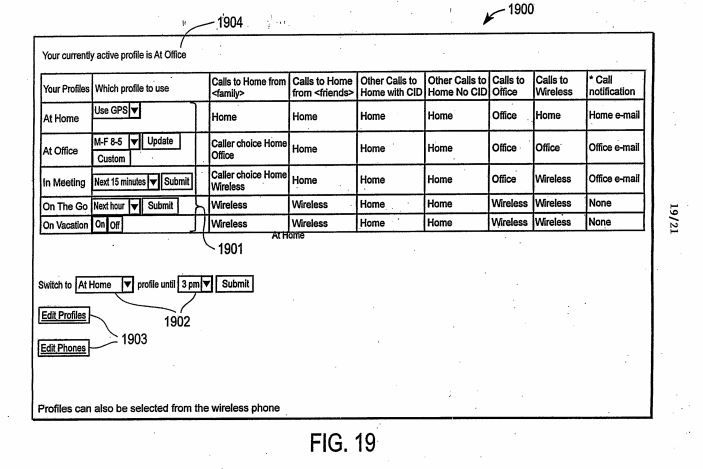This decision concerns an European patent application for a wireless device to manage cross-network telecommunication services. While the device is technical per se, the decision depends on whether the distinguishing feature(s) of the application are novel and involve an inventive step over the prior art. Here are the practical takeaways from the decision T 1352/18 (Call routing matrix/AVAYA) of 23.3.2021 of Technical Board of Appeal 3.5.03:
Key takeaways
Although the technical problem to be solved should not be formulated to contain pointers to the solution or partially anticipate it, merely because some feature appears in the claim does not automatically exclude it from appearing in the formulation of the problem. In particular where the claim refers to an aim to be achieved in a non-technical field, this aim may legitimately appear in the formulation of the problem as part of the framework of the technical problem that is to be solved, in particular as a constraint that has to be met. (cf. T 641/00, Headnote 2)
The invention
This European patent application centres on the provision and
use of a user profile for call routing ("call routing matrix
1900"; see e.g. Fig. 19). In this user profile, based on a
certain user activity mode (e.g. "At Home"; "At
Office", etc.) so-called communication management directives
(e.g. call forwarding settings such as "Send to
Voicemail"; "Ring Mobile", etc.) are associated with
the user's distinct user addresses (e.g. telephone number,
home/office email address) and the dedicated communication networks
(e.g. PSTN, wireless networks, etc.). This user profile is supposed
to be set up by the user and is most pertinently illustrated in
Figure 19 of the present application:  Fig. 19 of EP 1 794 995
Fig. 19 of EP 1 794 995
Here is how the invention was defined in claim 1:
Claim 1 (main request)
A computer-implemented method for handling incoming communications to a user, comprising:
for at least one user activity mode (302):
determining at least one communication management directive (303A, 303B, 303C) to be associated with the user activity mode (302) for each of a plurality of communication networks (1202, 103);
storing in a database (105A) separate from the plurality of communication networks (1202, 103), the association between the communication management directive (303A, 303B, 303C) and the user activity mode (302);
responsive to a communication being initiated to one of a plurality of user addresses associated with the user and with one of the plurality of communication networks (1202, 103):
determining a current activity mode for the user;
retrieving the stored association for the current user activity mode; and
determining, responsive to the retrieved association and responsive to a determination as to which user address was used in initiating the communication, which communication management directive applies to the initiated communication;
and
providing the applicable communication management directive to said one of the plurality of communication networks (1202, 103).
Is it patentable?
The first-instance examining division had refused the application based on lack of novelty over the prior art on record.
On the appeal stage, the board of appeal re-assessed the disclosure of D1 and found that D1 does not disclose the second last feature:
– determining which communication management directive applies to the initiated communication is further responsive to a determination as to which user address was used in initiating communication.
However, the board of appeal denied an inventive step based on the well-known problem-solution approach:
2.1.3 The board considers that the technical effect associated with this distinguishing feature is that it provides more flexible handling of incoming calls because, in addition to the activity mode for the user, also the "user address" used in initiating the communication is considered.
2.1.4 The objective technical problem can thus be defined as "how to adapt the call system of D1 to the case of multiple communication subscriptions (i.e. user addresses) per user", in which using more than one subscription per user is taken as an administrative requirement ...
2.1.5 ...For the skilled person, in view of the system of D1 – with each subscription comprising a respective single personal number (PN) associated with a respective subscriber profile – it would have been straightforward to associate a single user with multiple subscriptions in the underlying database, each subscription comprising a respective single PN associated with a respective subscriber profile.
The choice of a communication management directive for the initiated communication would inevitably have relied on both the user address used in initiating the communication (i.e. relating to which subscriber profile is to be used) and the retrieved association (i.e. the corresponding entry in the "Subscriber Schedule" for the corresponding subscriber profile).
As a result, the main request was found to lack an inventive step. Since none of the auxiliary requests was found to be allowable either, the appeal was dismissed in the end.
The content of this article is intended to provide a general guide to the subject matter. Specialist advice should be sought about your specific circumstances.

